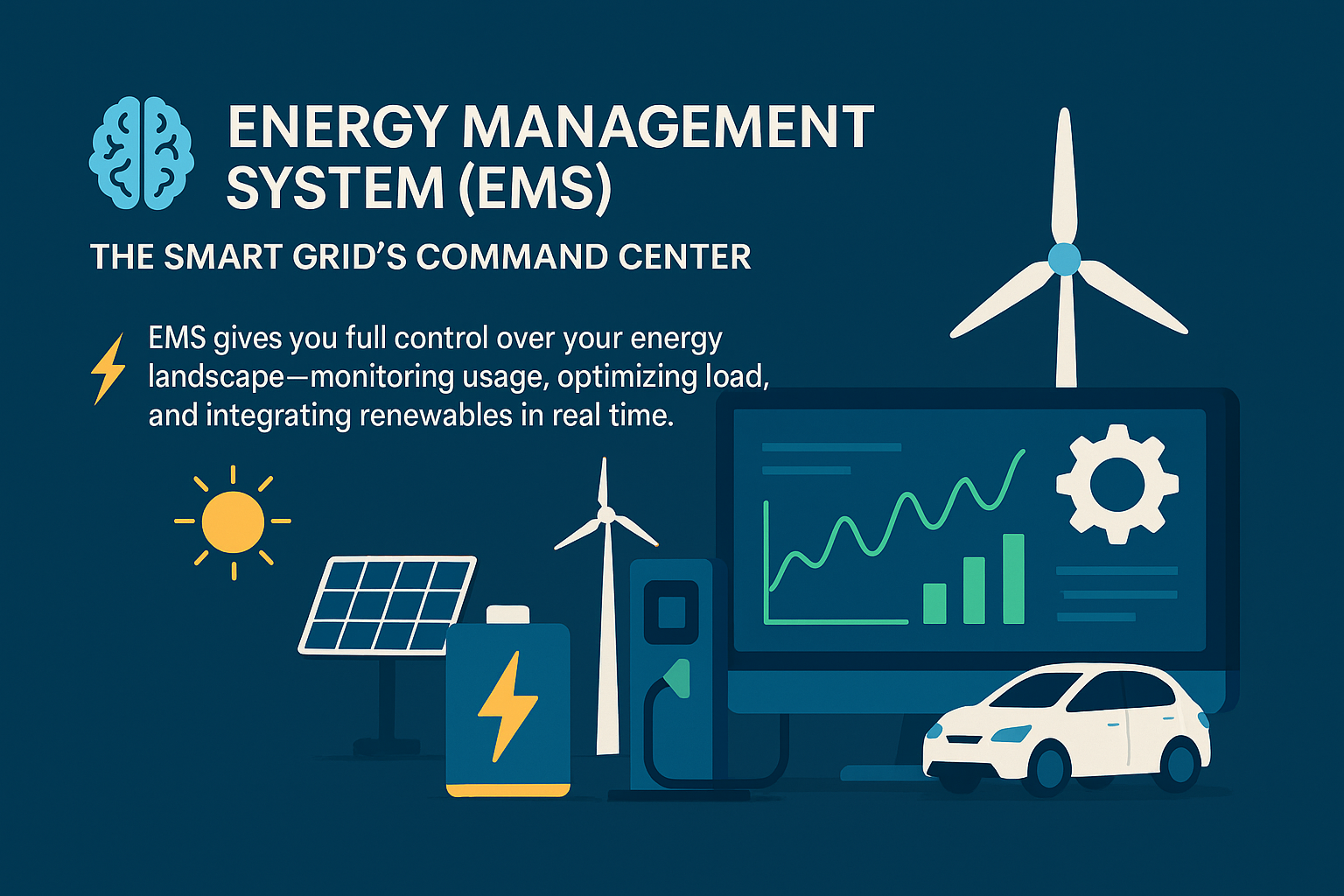Energy Management System (EMS)

An Energy Management System (EMS) is a digital solution designed to monitor, control, and optimize the energy usage of a facility, microgrid, or network in real time. It plays a critical role in reducing energy costs, enhancing system reliability, and integrating renewable energy sources and electric vehicle (EV) infrastructure.
Call out : 🧠 Energy Management System (EMS): The Smart Grid’s Command Center
EMS gives you full control over your energy landscape—monitoring usage, optimizing load, and integrating renewables in real time.
⚡ From EV chargers to solar panels and batteries, EMS ensures every watt is used wisely, cutting costs, improving reliability, and driving sustainability.
Core Functions
- Monitoring: Tracks energy consumption, generation, and storage across all assets.
- Control: Adjusts loads, battery usage, and generation sources (like solar/wind) based on demand.
- Optimization: Uses algorithms to balance cost, demand, and sustainability goals.
- Reporting: Provides insights into energy efficiency, peak loads, and anomalies.
Key Components
- Sensors and Meters: Collect real-time data on power usage.
- Central Controller: Makes decisions based on system conditions and priorities.
- User Interface: Allows users to view data, set rules, and control systems.
- Integration Layer: Connects with EV chargers, solar inverters, battery storage, HVAC systems, etc.
Applications
- Commercial Buildings: Reduces demand charges and peak consumption.
- EV Charging Networks: Coordinates load between multiple chargers using Dynamic Load Management (DLM).
- Industrial Plants: Optimizes production schedules around energy cost and availability.
- Microgrids and Smart Grids: Balances local supply and demand, integrates renewables.
Future Trends
- AI-Driven EMS: Predictive algorithms based on usage patterns and market prices.
- Vehicle-to-Grid (V2G): EMS orchestrates bi-directional power flows between EVs and the grid.
- Blockchain for EMS: Transparent energy trading and smart contracts in microgrids.



